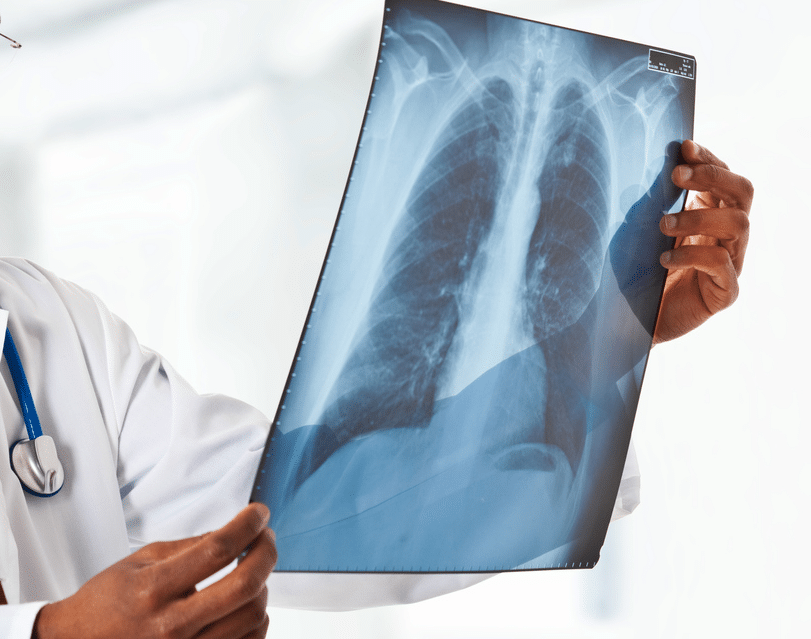Oct 05, 2020

Reading the latest coding advice from AHA Coding Clinic has probably surprised a lot of coders. As coders, we have always known that flash pulmonary edema was an acute event, but were never able to code as acute without physician clarification. We now have coding advice stating that “flash” is acute. This reminds me of years ago when they did allow us to consider “flare” as acute for the exacerbation of chronic obstructive pulmonary disease.
What is Acute (Flash) Pulmonary Edema?
Acute pulmonary edema is the rapid accumulation of fluid within the tissue and space around the air sacs of the lung (lung interstitium). When this fluid collects in the air sacs in the lungs it is difficult to breathe. Acute pulmonary edema occurs suddenly and is life threatening. This requires immediate care and without this can become fatal. Below we will look at the symptoms, causes, and treatments for acute (flash) pulmonary edema.
Acute (Flash) Pulmonary Edema Causes
Acute/flash pulmonary edema is considered to be either cardiogenic or non-cardiogenic.
Cardiogenic
Cardiogenic causes of acute/flash pulmonary edema are the most common. This type is caused by increased pressures in the heart. This develops when the diseased ventricle is overworked and isn’t able to pump out enough of the blood that it receives from your lungs. This causes the patient to develop congestive heart failure (CHF). We will not go into the different types of CHF in this tidbit since there is already one explaining this in detail. When this happens, pressure increases inside of the left atrium and then veins and capillaries in your lung causing fluid to be pushed through the capillary walls and into the air sacs. This rapid accumulation of fluid is also referred to by physicians as lung congestion. The heart diseases that typically are associated with cardiogenic acute/flash pulmonary edema are:
- Coronary artery disease
- Cardiomyopathy
- Heart valve problems or disease
- Hypertension
Non-Cardiogenic
Non-cardiogenic acute/flash pulmonary edema is caused by leak of fluid from the capillaries in the lung air sacs because the capillaries become more leaky (permeable) even in the absence of back pressure build up from the heart. Pulmonary capillary wedge pressure is NOT elevated and remains less than 18 mmHg when the cause is non-cardiogenic. This is important since treatment will differ due to this. Diseases that are most common for cause of non-cardiogenic acute/flash pulmonary edema are:
- Acute respiratory distress syndrome (ARDS)
- Near drowning
- High altitudes
- Transfusion related
- Smoke inhalation
- Nervous system conditions
- Exposure to certain toxins
- Adverse reaction to drugs
- Pneumonia/sepsis/infection
- Trauma
- Pulmonary embolism
- Viral illness
Symptoms of Acute/Flash Pulmonary Edema
- Difficulty in breathing
- Extreme shortness of breath
- Worsening breathing difficulty while lying down
- Feeling of suffocating or drowning/feeling of impending doom
- Wheezing and gasping for breath/coughing
- Blue or grey tone to skin/lips
- Palpitations/rapid irregular heartbeat
- Clammy cold feeling skin
- Anxiety/restlessness/confusion
- Frothy sputum
- Chest pain/headache
- Falling oxygen saturations
Treatment of Acute/Flash Pulmonary Edema
Cardiogenic
Efforts to maximize heart function by decreasing cardiac work and intravascular volume is the treatment for cardiogenic causes of acute/flash pulmonary edema. Drug treatment and a non-rebreather O2 face mask at 15 liters can help to improve oxygen saturation. Here are some of the drugs used for treatment of cardiogenic acute/flash pulmonary edema:
- Furosemide
- Nitroglycerine
- Nitroprusside
- Morphine
Non-Cardiogenic
The first treatment is to address the underlying cause of the acute/flash pulmonary edema. Supportive care and treatment varies depending on the cause. The underlying disease should receive treatment until there is resolution of the acute/flash pulmonary edema.
The main take-away from this is physician documentation of “flash” pulmonary edema can now be considered the same as “acute” pulmonary edema for coding purposes.
Authored by Kim Boy, RHIT, CDIP, CCS, CCS-P
References
AHA Coding Clinic for ICD-10-CM/PCS, Third Quarter 2020: Page 27
ncbi.nlm.nih.gov/books/NBK542230/.
mayoclinic.org/diseases-conditions/pulmonary-edema/symptoms-causes
HIA’s comprehensive auditing approach includes acute coding audits and Clinical Documentation Integrity (CDI) audits.
The information contained in this coding advice is valid at the time of posting. Viewers are encouraged to research subsequent official guidance in the areas associated with the topic as they can change rapidly.
Subscribe to our Newsletter
Recent Blogs
Related blogs from Medical Coding Tips
Interventions for endovascular revascularizat...
The 2026 updates to CPT and the Hospital Outp...
Accurate diagnosis coding relies on recognizi...
Halloween brings fun, fright—and a rise in em...
Subscribe
to our Newsletter
Weekly medical coding tips and coding education delivered directly to your inbox.




